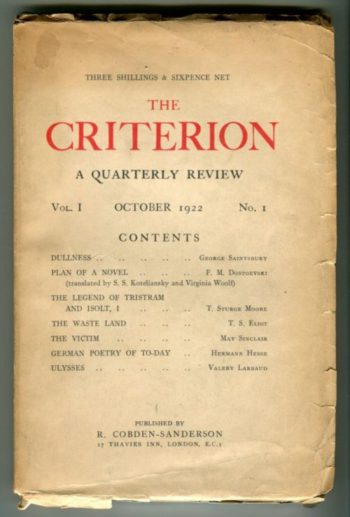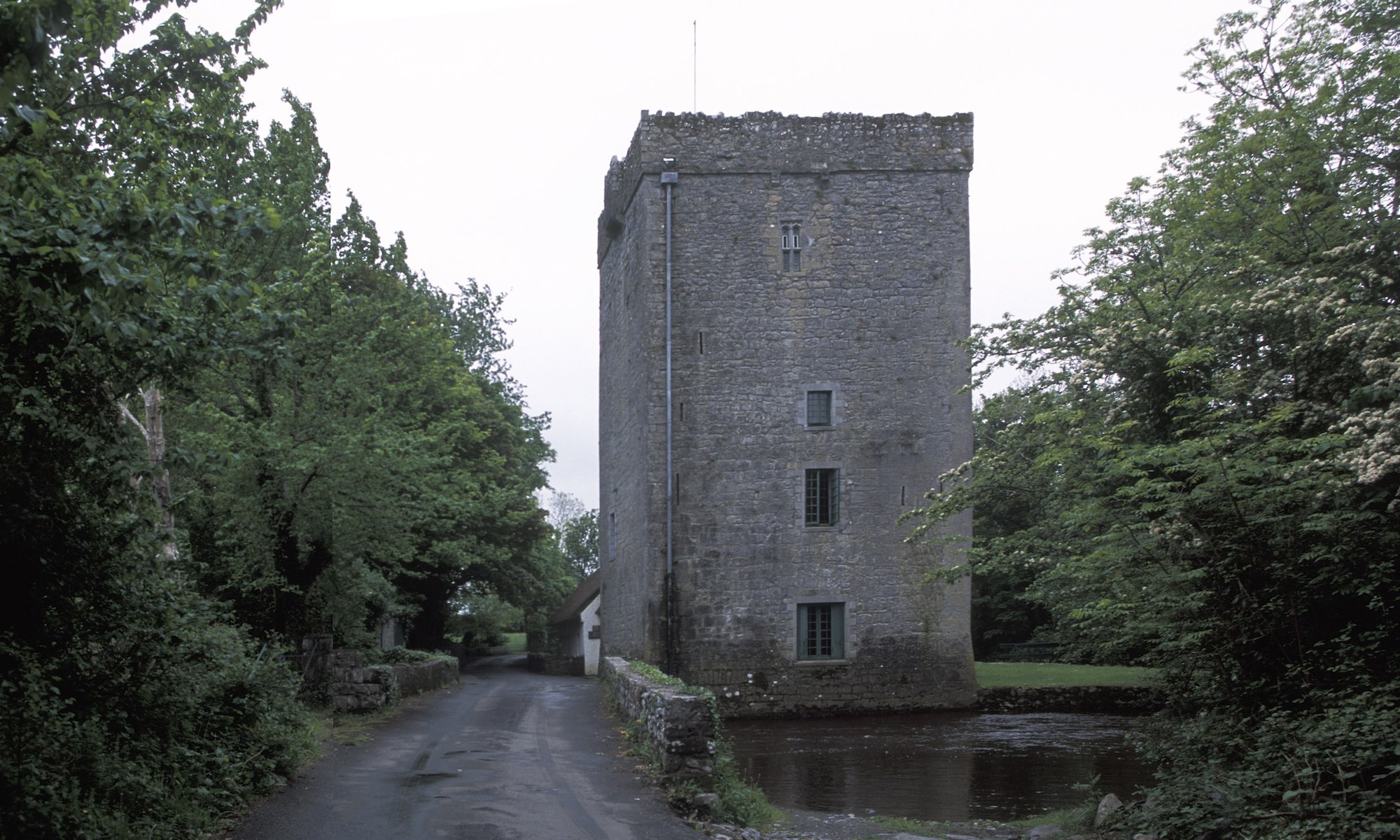The Monthly Criterion (1922-1939)
 The Criterion was a periodical edited by T.S. Eliot, an outlet for modernism and criticism in which Eliot could promoted what he called “the European idea — the idea of a common culture of Western Europe.” In an effort to model a common European culture, The Criterion was designed to resemble the well-known monthly Parisian circular La Nouvelle Revue Francaise. The circular paid its contributors and initially carried no advertisements, valuing artistic credibility over commercial success.
The Criterion was a periodical edited by T.S. Eliot, an outlet for modernism and criticism in which Eliot could promoted what he called “the European idea — the idea of a common culture of Western Europe.” In an effort to model a common European culture, The Criterion was designed to resemble the well-known monthly Parisian circular La Nouvelle Revue Francaise. The circular paid its contributors and initially carried no advertisements, valuing artistic credibility over commercial success.
The Criterion positioned itself as an alternative to the avant-garde extremists of modernism, instead modeling itself off well-respected Victorian journals of the past. The periodical featured major poets and writers including Ezra Pound, W. B. Yeats, James Joyce, Marcel Proust, Virginia Woolf, and E. M. Forster. Despite this wealth of talent and influence, The Criterion struggled financially and was often criticized — critics included Ezra Pound — for being politically cautious and conservative. Eliot was criticized for his politically evasive editorials.
In 1927, The Criterion took on the name The Monthly Criterion in an effort to increase the financial success of the journal. The magazine increased its print-run and accelerated its publishing rate, beginning to publish every month. Eliot also began to encourage a series of carefully-designed controversies, picking disagreements with other scholars to court scandal and encourage readership. These scandals were generally unsuccessful and only succeeded in distracting from some of The Monthly Criterion‘s best published work, including Yeats’s “The Tower.”
